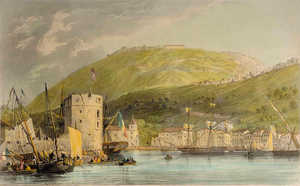Trincadura
The decline in military shipbuilding from the nineteenth
century encouraged the use of smaller ships. Gunboats (lanchas
cañoneras) played a very active part in the First Carlist
War. The clinker design of these military launches is widely
known on Spain’s Atlantic coast as “trincadura”, and in the
Basque Country the term was adopted to refer to the vessels
themselves.
With the introduction of traditional fishing launches into the
battle, (which proved superior to the military boats), a new
flush-laid “trincadura” soon developed (despite the apparent
contradiction in terms).
For several decades, this vessel was used for coastal surveillance
and marine rescue. The trincadura, designed for
speed and freed of the restrictions imposed by fishing and
cargo transport, was probably the maximum expression of
maritime technology among smaller vessels in the Basque
Country.

“Strong, well-built but quite finely-shaped ships which perform
very well at sea". (Dictionnaire de la Marine à Voile, 1856). © José Lopez

The military launches were the only clinker-built ones on this
coast in the nineteenth century. This distinguishing feature became
a sign of identity, and the Basque seafaring community referred to
them as trincaduras. Local smooth-hulled boats on military
functions subsequently adopted the same name, despite the contradiction. © José Lopez

Bayonne trincadura in Pasaia, supporting the liberal forces in
the First Carlist War. It is fitted with a number of guns, in this case
a stone-throwing mortar secured on the gunwale. © José Lopez

This view gives details of the sails used on this large trincadura.
A topsail can be seen, over the mainsail and the rigging is well
detailed with halyards, topping lifts and preventer shrouds. © José Lopez

Sail plan of a trincadura from the nineteenth century, given by
the Marquis of Folin to the Vice-Admiral Paris to be published in
“Souvenirs de Marine”. © José Lopez

Similar in character to the cargo and fishing launches, the
trincaduras had more refined proportions, giving the extra speed
needed to intercept the enemy.
© José Lopez










